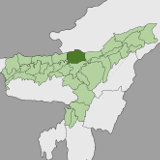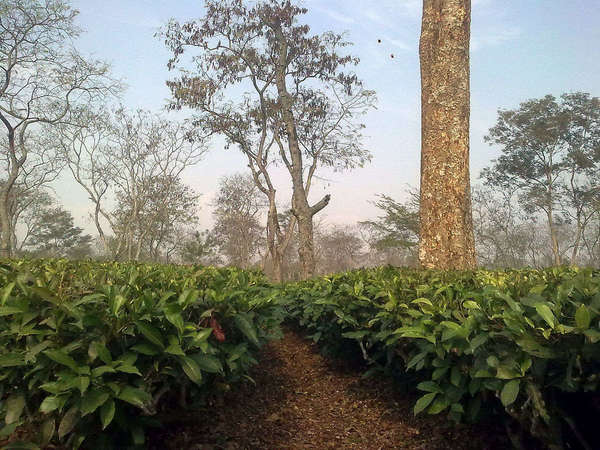Tea Plantation in Sonitpur district of Assam
Note the large leaf size, clearly evident in this photo.
I also love the way this photo shows the barren trees in the background; this photo was taken mid-January, in the middle of winter. The tea plant is an evergreen plant, but many of the trees growing in this region are deciduous, losing their leaves more due to drought than cold. Little precipitation falls from November to February, whereas rainfall is very heavy.
The Assam region also tends to have richer soils than the nearby upland tea-growing regions like Darjeeling and Nepal. Nutrient-rich soils tend to favor deciduous vegetation, as the plants can easily recoup the nutrients they lose when they drop their leaves. The tea plant evolved in the upland areas, and was only later brought into these low-lying areas to be cultivated. Its evergreen nature is a natural adaptation to conserving nutrients in the poor, rocky soils where it is native.
Region: Sonitpur, Assam, India




